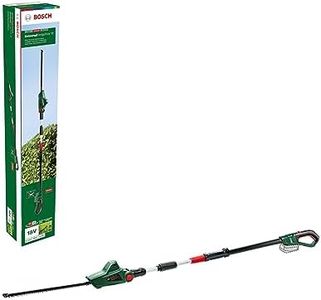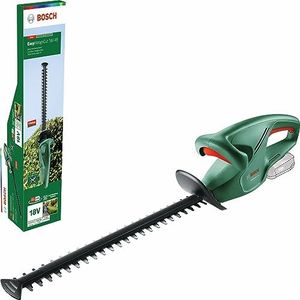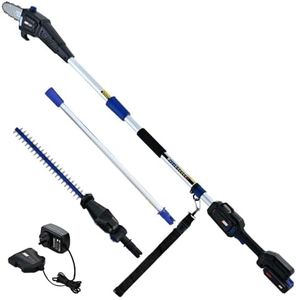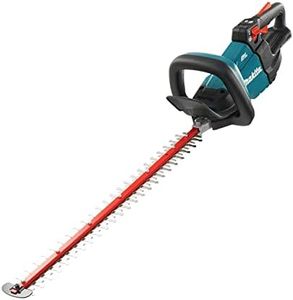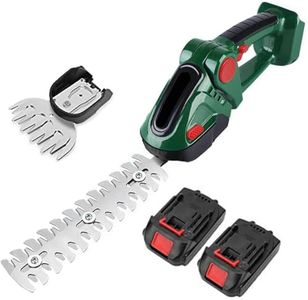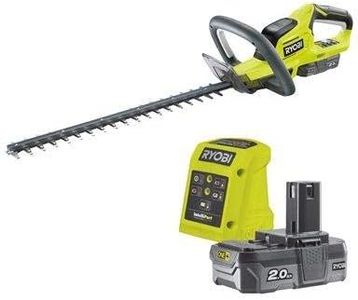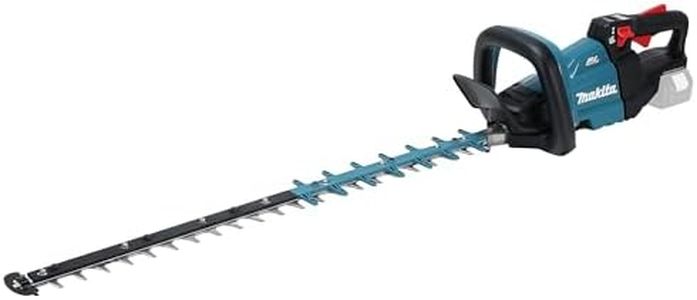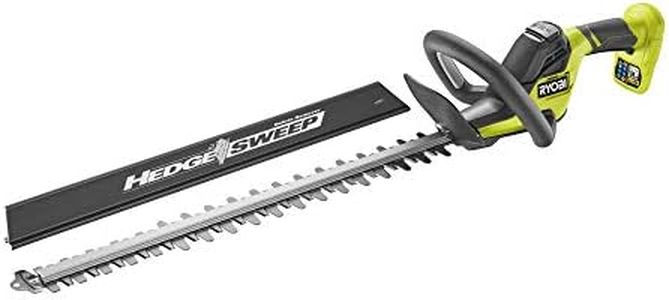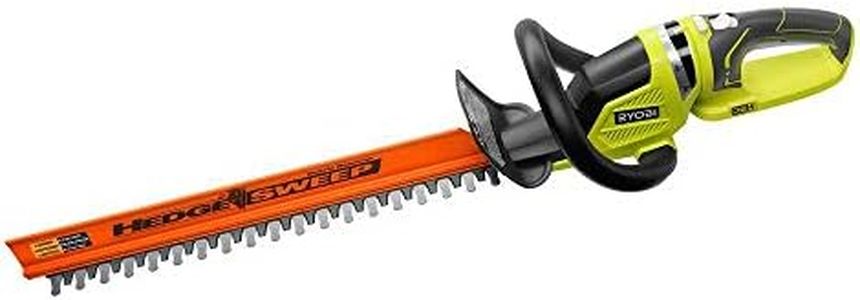We Use CookiesWe use cookies to enhance the security, performance,
functionality and for analytical and promotional activities. By continuing to browse this site you
are agreeing to our privacy policy
10 Best Hedge Trimmers
From leading brands and best sellers available on the web.Buying Guide for the Best Hedge Trimmers
Choosing a hedge trimmer can make maintaining your garden much easier and help you keep your bushes neat and tidy. The right hedge trimmer depends a lot on the size and type of plants you have, how often you need to trim, and what feels comfortable for you to use. By understanding the key features, you’ll be able to find a hedge trimmer that matches both your needs and your working habits.Power SourceHedge trimmers usually come in three types: corded electric, battery-powered, and gas-powered. Corded electric trimmers need to be plugged in, which means you have unlimited power but must work near an outlet and manage the cord. Battery-powered trimmers are cordless and give you freedom to move, but they run for a limited time before needing a recharge. Gas-powered trimmers offer the most power and mobility, suited for tough jobs and large spaces, but they are heavier and need more maintenance. Think about the size of your yard and whether you need unrestricted mobility when choosing the power source.
Blade LengthBlade length determines how much hedge you can cut in one pass. Shorter blades (about 16-18 inches) are easier to control and best for small hedges or shaping detailed work. Medium-length blades (20-24 inches) offer a good balance for most standard hedges. Longer blades (above 24 inches) can cut more quickly and are best for large and tall hedges but can be heavier and harder to manage. Decide how much reach you need without sacrificing maneuverability.
Blade TypeBlades can be single-action or dual-action. Single-action blades move one blade past a stationary one, which is simpler but usually vibrates more. Dual-action blades move both blades in opposite directions for a smoother cut with less vibration and noise. If you want less fatigue and a smoother experience, dual-action blades are a good choice, especially for longer trimming sessions.
Cutting CapacityCutting capacity refers to the maximum branch thickness the trimmer can handle, usually measured in millimeters or inches between teeth on the blade. For typical garden hedges and soft branches, a smaller cutting capacity is enough. If you have thicker or older branches, prefer a trimmer with a wider cutting gap. Be realistic about the size of the branches you’ll cut and choose accordingly, as using a trimmer beyond its rating can damage the tool.
WeightThe weight of a hedge trimmer impacts how long and how comfortably you can use it. Lighter models are less tiring and easier to maneuver, which is ideal for extended use, shaping, or reaching overhead. Heavier trimmers are often more powerful but can cause fatigue sooner. Consider how much strength you have, how often you’ll use the trimmer, and how large your hedges are when deciding on an appropriate weight.
Safety FeaturesLook out for features like blade covers, automatic shut-off, two-handed switches, and hand guards. These are designed to keep you safe by preventing accidental start-up or unintended contact with the blades. If you’re newer to power tools or have children around, prioritizing safety features makes using the hedge trimmer less risky and more reassuring.
ErgonomicsErgonomics relate to handle design, grip comfort, and overall balance. Well-designed trimmers feel comfortable to hold and easy to control, which reduces fatigue and improves cutting accuracy. Try to pick a trimmer that fits well in your hands, is easy to hold for your typical task duration, and has well-placed controls. If you have wrist or arm issues, this is especially important.
